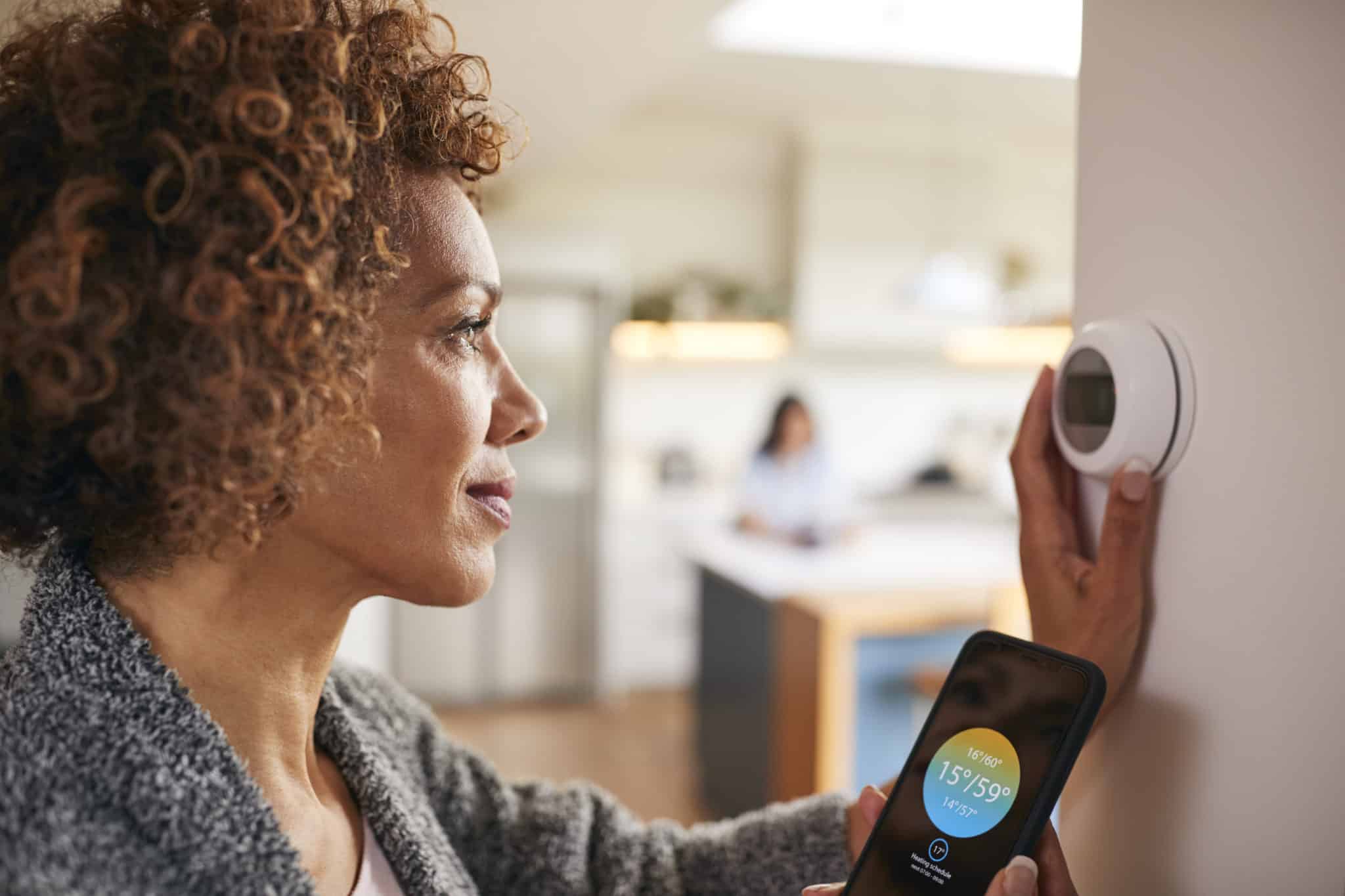Incorporating sustainable technology in the home is becoming a priority for families across America. And this is a good thing because the way we consume resources can be shocking when you look at the numbers.
According to the United States Environmental Protection Agency, the average household uses over 300 gallons of water daily. The U.S. Energy Information Administration shared equally surprising statistics about the average electricity consumption. It reported an average American home consumes almost 900 kilowatthours monthly.
While it may not seem like you’re using that much water or electricity, everything from flushing a toilet to leaving the outside light on can add up quickly.
So, if you are striving to have a more eco-friendly home, here are eight sustainable technology options you can start using today.
1. Decorate Outdoor With Solar Lanterns
According to a 2022 Forbes Home survey, almost half of respondents said they want to install solar panels in their home. However, the biggest hurdle to this type of sustainable technology is the upfront cost, which sometimes reaches over $10,000.
A much more affordable place to start is with individual solar-powered products, like solar lanterns. Some solar lanterns have ground stakes and act as semi-permanent fixtures to upgrade your garden or backyard.
Others, like the Les Jardins Roam Outdoor Lanterns, feature elegant designs and function as portable lanterns.
Simpler and more affordable options like Goal Zero Crush Lights are perfect for camping, hiking, or even a campfire in your backyard. These foldable lamps are easy to transport and have three light settings to provide the perfect outdoor ambiance.
2. Keep Your Gadgets Charged Using a Solar Charger
Another way to use solar energy without investing in giant roof panels is to buy a solar charger. While designed for hikers and outdoor adventurers, these portable chargers can work for your home or office. Place the panels in direct sunlight and then connect your phone or other electronics to the USB ports.
The BigBlue Solarpowa 28 Sun Power Solar Charger is a powerful option that costs less than $100 and has three charging ports. This is particularly ideal if you or your family have multiple devices and are constantly charging at least one.
3. Save Water With a Dual-Flush Toilet
Did you know that the average American household uses more water just by flushing toilets than showering and washing clothes?
One way to reduce water consumption is investing in a dual-flush toilet. A single-flush toilet uses the same amount of water for both solids and liquids. On the other hand, a dual-flush toilet lets you select how much water you want to use based on the waste. The dual-flush system cuts the amount of water used for liquids by about 40%.
If you don’t have a dual-flush toilet but want to add one to your home, you can invest in a new WaterSense-labeled model like the Studio Dual Flush toilet from American Standard.
However, purchasing an entirely new toilet may cost several hundred dollars. A conversion kit, like the 550DFRK Dual Flush Conversion System from Fluidmaster is a less expensive sustainable technology option. This is because you simply install it on your existing toilet to convert it into a dual-flush toilet.
4. Invest in a Low-Flow Shower Head
After flushing a toilet, showering is the biggest culprit of excess water consumption. Low-flow shower heads can help reduce the amount of water you use, which in turn also reduces the energy needed to heat that water.
Of course, the easiest way to reduce water consumption is to take shorter showers. But even if you already do that, using a low-flow showerhead can reduce water consumption water even more.
Models like the Delta 2-Setting Shower Head sport the WaterSense label and can help you use 20% less water than usual. Plus, these shower heads maintain the pressure so you don’t have to sacrifice your showering experience.
5. A Tankless Water Heater Reduces Energy Costs
If you struggle to keep your energy costs down, consider a tankless water heater. Instead of heating all of the water in your 40- or 50-pound water tank, it heats only as much water as you need.
Because this is fairly new technology, tankless water heaters can be expensive. However, you can find smaller and more affordable tankless water heaters, like the EcoSmart ECO 11. Depending on the climate where you live, a tankless water heater of this size can heat enough for one of the following:
- Bathroom sink
- Kitchen sink
- Shower
6. Switch to a Smart Thermostat
A smart thermostat is another piece of sustainable technology that can help you become more energy efficient. These devices, like the Ecobee smart thermostats, use occupancy-sensing technology so you don’t waste energy when you’re not home.
Smart thermostats can also learn your routine and climate preferences and offer recommendations. And for added convenience, you can control them remotely from your phone or smartwatch.
7. Install Smart Blinds to Maintain Temperature in Your Home
While they may seem purely decorative, blinds and window shades can help you minimize energy consumption. They can stop the hot sun from heating your house if you’re trying to keep it cool, or they can help keep the heat inside during winter.
Smart blinds take this a step further by automatically adjusting to help you save energy. Models like the app-controled MySmartBlinds from SmarterHome react to your home’s temperature and help lower energy costs. They even run on solar energy for extra sustainability.
8. Try Your Hand at Indoor Composting
While not exactly a piece of tech, indoor compost bins can help reduce food waste and create a more sustainable home. If you’re worried about an ugly compost bin ruining your kitchen decor, there are lots of choices in different designs that can blend in with your kitchen while still holding a decent amount of organic waste.
Some models, like this simplehuman compost caddy, have a magnetic dock so you can attach them to your standard garbage can. You can also look for other features like antimicrobial coating and an air-tight seal to keep your kitchen looking and smelling fresh.
Make Your Home More Eco-Friendly With Sustainable Technology
No matter your budget, lifestyle, or home size, you can implement sustainable technology and do your part to reduce your environmental impact. Start with the list above and choose an option—or two or three.
Remember, even a small change toward sustainability can make a significant difference in the long run.






